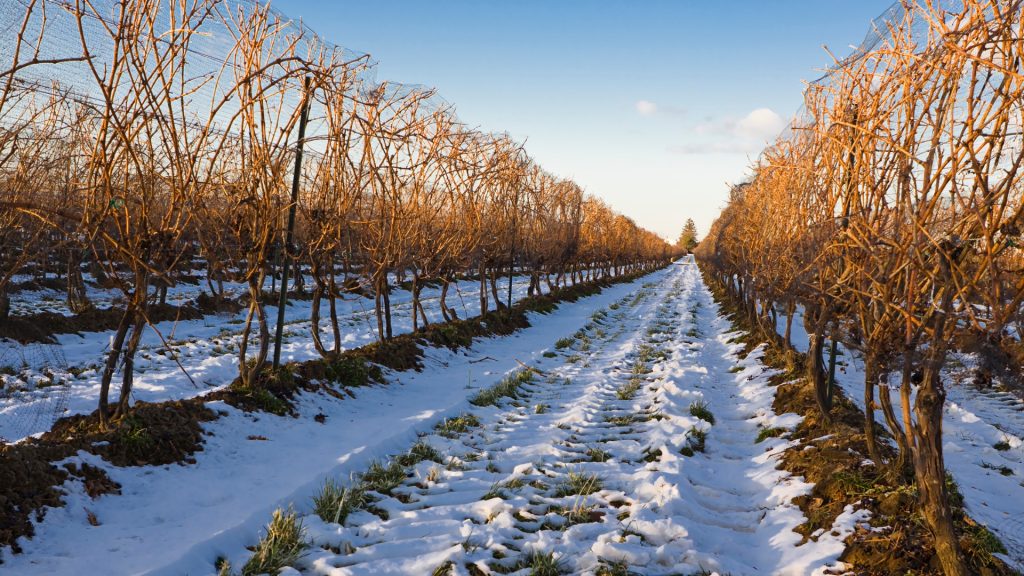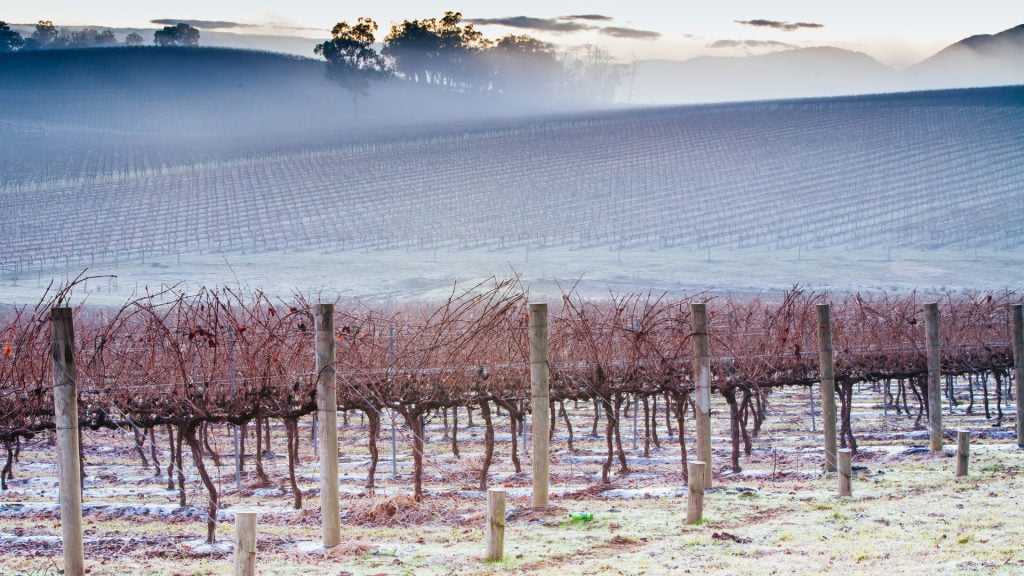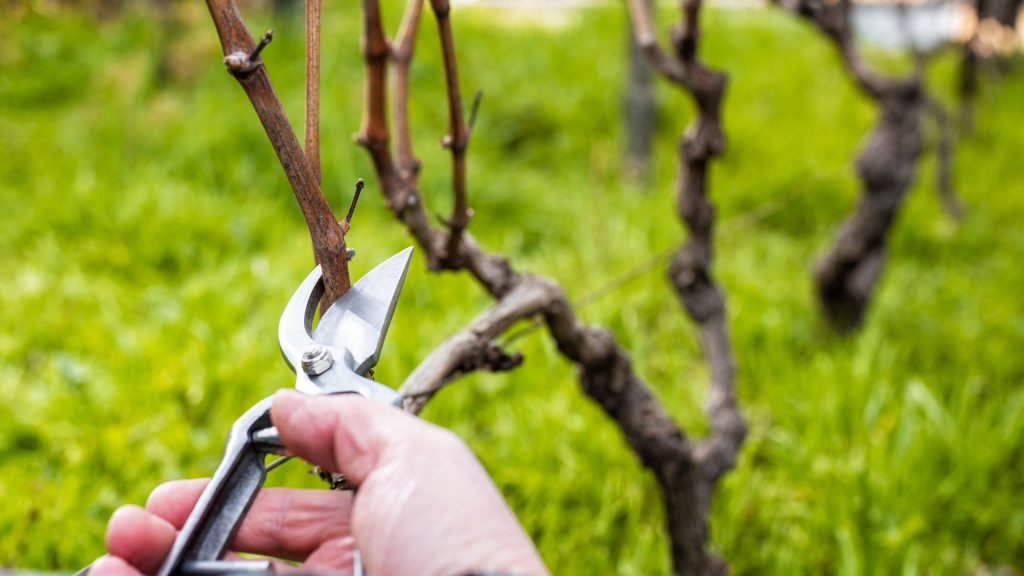Three months out of the year, the grapevine doesn’t seem alive. After other seasons that spoil us with a plethora of colors, from the raw green to the blood-red of the leaves or from the gold of white grapes to the dark purple-blue of black grapes, in winter everything seems frozen in space and time.
There is life without leaves, too
Most people, and a large proportion of those who work in vineyards, claim that during the winter the grapevines simply rest, recover, sediment their accumulations of reserve substances, and prepare for the next season’s growth and fruiting.
This is where the contradiction comes in: the grapevine rests (dormancy or vegetative rest) but prepares for a new harvest. Using the verb "to prepare" leads one to think of action, activity, and not rest at all.
A lot happens in the vineyard even during the long winter months: the differentiation of the buds from the fruit is completed, and the wood and bark mature, if we refer only to the plant itself.
If we talk about anthropic activity, we notice that there are works to normalize the fruit load, prevent wood diseases, prevent the appearance of pests, cleaning, and repairing of the support system. An entire industry is operating at full capacity, almost unnoticed by many who view a vineyard, in winter.


There is a feverish activity in the soil
In periods of positive winter temperatures, when the soil is not frozen, the roots of the vine continue their growth, which began in autumn, just after the leaves have fallen. Grapevines are known to have two periods of intense root growth: early spring and late autumn, a feature that allows rooted young grapevines to be planted at these two times of the year with relatively similar success.
I pointed out that the result is relatively similar because I’m a fan of autumn planting because, before budbreak, newly planted grapevines go through two periods of intense root growth, which makes them more resilient in their first year of growth at the final spot, even in a dry year. Planting in spring, in a difficult year, may require watering each plant or even irrigation, which is often quite complicated, especially on sloping land.
During the period of intense root growth (the thin, absorbent roots), the grapevine root extracts nutrients from the colloidal micelle of the soil to enable it to withstand the low temperatures of winter and strengthens it for spring, when it must pump out sap to feed the new shoots until the first leaves capable of photosynthesis appear.
If during the growing season, under the photosynthetic action of the leaves, grapevines store carbohydrates in the woody organs (trunk, branches, two-year-old and beginning in the annual elements), this process slows down with the arrival of autumn. The carbohydrates (of the polysaccharide type) stored in the woody structure play an essential role both in resistance to low temperatures and as an energy reservoir for the return to vegetation in spring.
In winter, the carbohydrate reserve, combined with the nutrients absorbed from the soil by the roots, will provide the grapevines with the energy they need to complete the ‘weeping’ (the exudation of sap through the pruning wounds), to budbreak, to grow new shoots and the first leaflets, once the ambient temperatures remain above 10 degrees Celsius for several days.
Recent research has shown that warm periods during the cold season, the "windows of winter", when temperatures exceed 10 degrees Celsius for days at a time, can cause the budburst to start even at 8 to 9 degrees Celsius, once the sap has started its upward flow. Therefore, pruning work should be carefully thought out and done with maximum discernment.
Manifesto for the preservation of old vineyards
The soil in vineyards is an extremely lively and dynamic environment, even in winter. This is where mycorrhiza, the symbiosis of microscopic fungi with grapevine roots, takes place. This stable coexistence allows the grapevines to absorb a certain spectrum of nutrients from the soil, which allows the survival of the specific fungal mycelia.
Part of the notion of terroir must be closely linked to this mycorrhiza. The destruction of old vineyards, where the mycorrhiza is stable and the plants extract certain components from the soil, giving a particular taste to grapes and wines, can be the cause of the loss of a wine’s identity. Because a new plantation, even with the same variety, on the same site, needs at least 10 years for the mycorrhiza to stabilize and define the specificity of the place, the terroir.
Wines made from grapes that come from young vineyards are strong, hard, and wild. In the first years after coming to fruition, the mycorrhizal-free grapevine extracts almost everything it can from the nutrient complex of the soil on which it is grown, concentrating mainly on the growth and accumulation of reserve substances.
In red wine, made from grapes from a vineyard that has been in production for three to four years, we will never find the smoothness and softness of tannins that a wine made from grapes from a 30-year-old vineyard will have. On the one hand, the roots already have stable mycorrhiza, and on the other hand, the wood structure, which has already accumulated biological reserves of a certain kind, filters and provides the grapes with typical nutrition, specific to the variety and the place.
Grapevine varieties, which produce grapes for red wines suitable for maturation and long evolution, need a more abundant woody structure, and more multiannual wood left at the fruit-bearing prunings, than grapevine varieties for white wines. They lend themselves to the annual renewal of the woody skeleton, through pruning, in order to always have freshness and fruitfulness, the path from the root to the leaf being shorter, and the ripening of the grapes being almost exclusively the prerogative of the canopy.

Grapevine pruning, between necessity and science
It is a whole philosophy, this operation of winter pruning of the grapevine (of fruiting, regeneration, replacement, rejuvenation, cleaning, surgical – in case of wood diseases). It is so called because the sap does not yet circulate through the elements subject to pruning, as it is too busy doing what it has to do at the root level.
Pruning during the growing season, when there are leaves on the grapevines and the sap circulates in both directions, is called "green" pruning (weeding the young shoots from the trunk, cutting the greedy shoots, trimming the shoot tops, normalizing the blossoms, shearing the bunches, green harvesting, partial defoliation).
The first national competition of pruning grapevines, which takes place at the beginning of March, more precisely on 11 March 2023, in the Tamaioasa romaneasca plantation at SDCDPV Pietroasa, Buzau county, is still during the dormant period when grapevines are busy growing roots, leaving people time to take care of their aerial part.
The competition WOR – The Best Grapevine Pruner in Romania – 2023 , pays tribute to the work of these people, who work in the vineyard when it does not seem alive.







